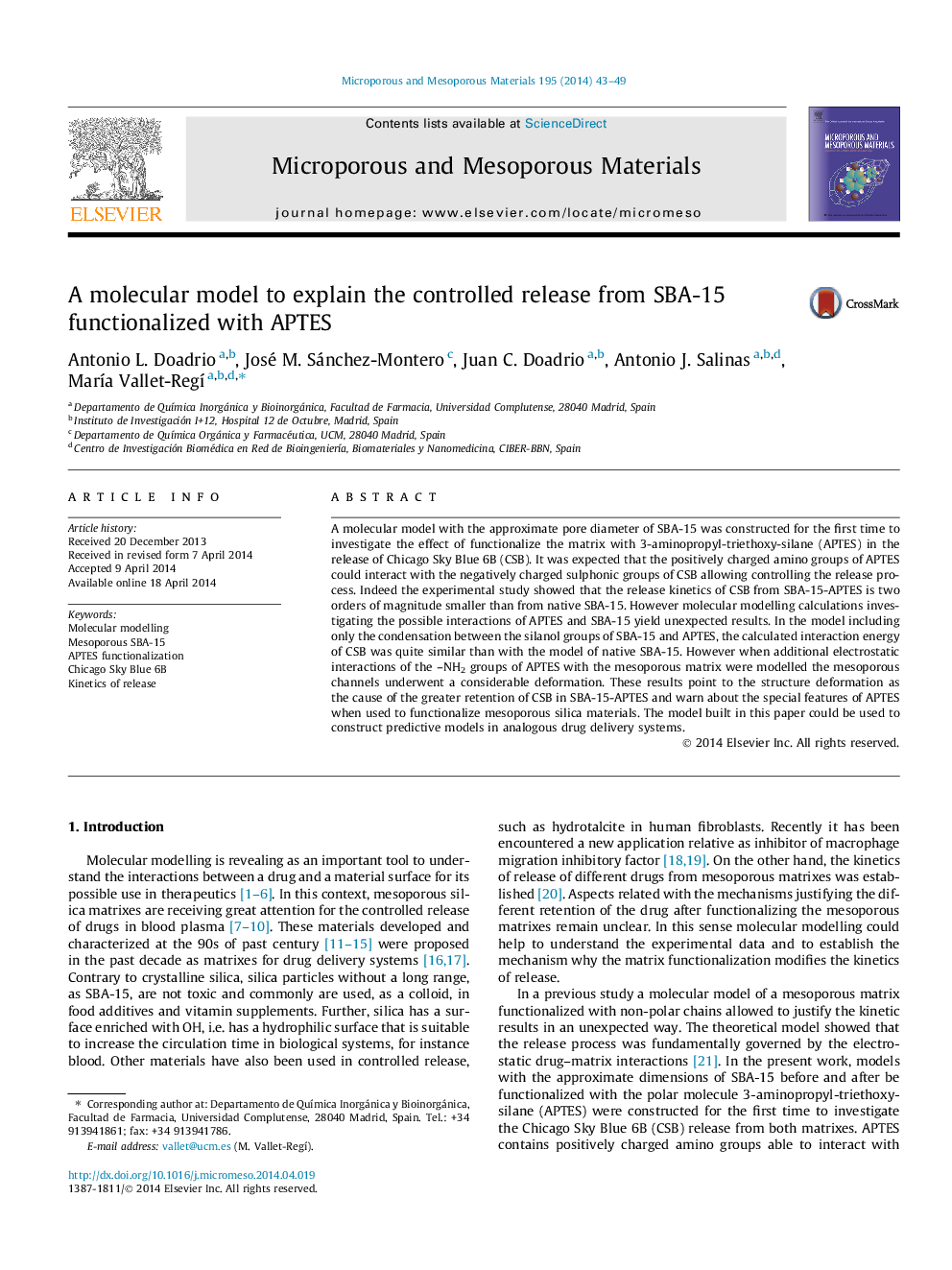| Article ID | Journal | Published Year | Pages | File Type |
|---|---|---|---|---|
| 73095 | Microporous and Mesoporous Materials | 2014 | 7 Pages |
•A molecular model was built to explain the controlled release from SBA-15.•When SBA-15 was modified with APTES the release kinetics greatly decreased.•Molecular modelling gave similar interaction energies before and after functionalizing.•The interaction of amino groups of APTES and SBA-15 notably distorts the pores.•This distortion explains the retarded release of the model drug from SBA-15-APTES.
A molecular model with the approximate pore diameter of SBA-15 was constructed for the first time to investigate the effect of functionalize the matrix with 3-aminopropyl-triethoxy-silane (APTES) in the release of Chicago Sky Blue 6B (CSB). It was expected that the positively charged amino groups of APTES could interact with the negatively charged sulphonic groups of CSB allowing controlling the release process. Indeed the experimental study showed that the release kinetics of CSB from SBA-15-APTES is two orders of magnitude smaller than from native SBA-15. However molecular modelling calculations investigating the possible interactions of APTES and SBA-15 yield unexpected results. In the model including only the condensation between the silanol groups of SBA-15 and APTES, the calculated interaction energy of CSB was quite similar than with the model of native SBA-15. However when additional electrostatic interactions of the –NH2 groups of APTES with the mesoporous matrix were modelled the mesoporous channels underwent a considerable deformation. These results point to the structure deformation as the cause of the greater retention of CSB in SBA-15-APTES and warn about the special features of APTES when used to functionalize mesoporous silica materials. The model built in this paper could be used to construct predictive models in analogous drug delivery systems.
Graphical abstractFigure optionsDownload full-size imageDownload as PowerPoint slide
